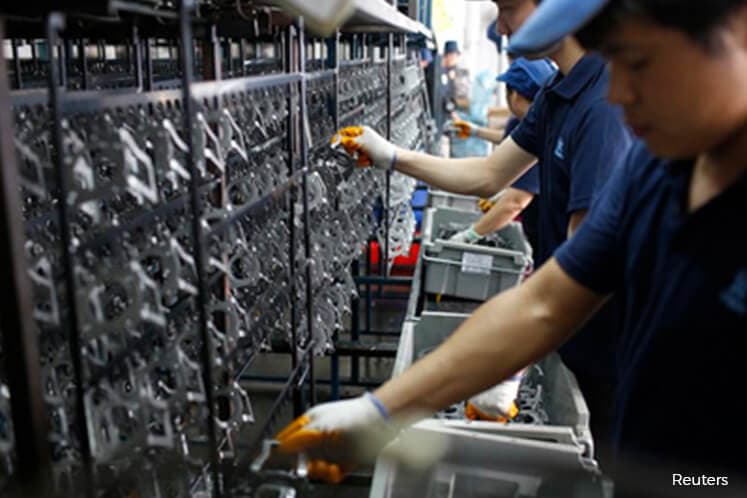
KUALA LUMPUR (June 3): Malaysia’s Nikkei Manufacturing Purchasing Managers’ Index (PMI) slipped to 48.8 in May, down slightly from April’s seven-month high of 49.4 but below the long-run average.
Latest survey data of the Nikkei Malaysia Manufacturing PMI revealed further challenges for Malaysian manufacturers during May, with firms continuing to report a weakening demand environment, particularly in international markets.
In a statement today, IHS Markit which compiles the data, said that more positively, downward pressure on manufacturing growth has eased since earlier in the year and expectations towards the coming 12 months were their most positive in over five-and-a-half years.
It said manufacturing output remained under pressure during May, reflecting challenging demand conditions facing the sector, particularly from overseas.
Nonetheless, the survey’s output gauge held close to April’s six-month high, suggesting the forces weighing on output growth have eased so far in the second quarter.
Analysis of comparable historical official data on Malaysian manufacturing output suggests that, at current levels, the survey’s output index signals annual production growth of just over 4%.
IHS Markit said purchasing activity also declined in May, partly due to an increased focus on cost control amid slower production growth. Inventories were also reduced slightly as part of stock adjustment measures.
It said lower buying volumes helped ease pressure on supply chains, with lead times broadly unchanged since April.
Survey data on prices meanwhile indicated a pick-up of inflationary pressures in May.
Anecdotal evidence indicated that unfavourable exchange rate variations had exacerbated raw material price increases, leading overall operating costs to rise at the fastest pace since last November.
Output prices increased at the quickest rate in six months as firms sought to protect margins.
IHS Markit chief business economist Chris Williamson said the PMI lost a little ground in May but remained well above the lows seen earlier in the year, hinting that the worst is hopefully over for Malaysia’s manufacturers.
“The average PMI reading for the second quarter so far is the highest since the third quarter of 2018. An improvement in companies’ future output expectations to the highest for five-and-a-half years adds to signs that the business environment has started to brighten again.
“The improved manufacturing performance should therefore should help drive faster economic growth of around 5% in the second quarter.
“Companies clearly continue to exercise caution, however, notably in respect to being exposed to a possible deterioration in the global trade environment and currency fluctuations, meaning a focus on cost control remained evident in May. Both hiring and inventories consequently remained under pressure,” he said.